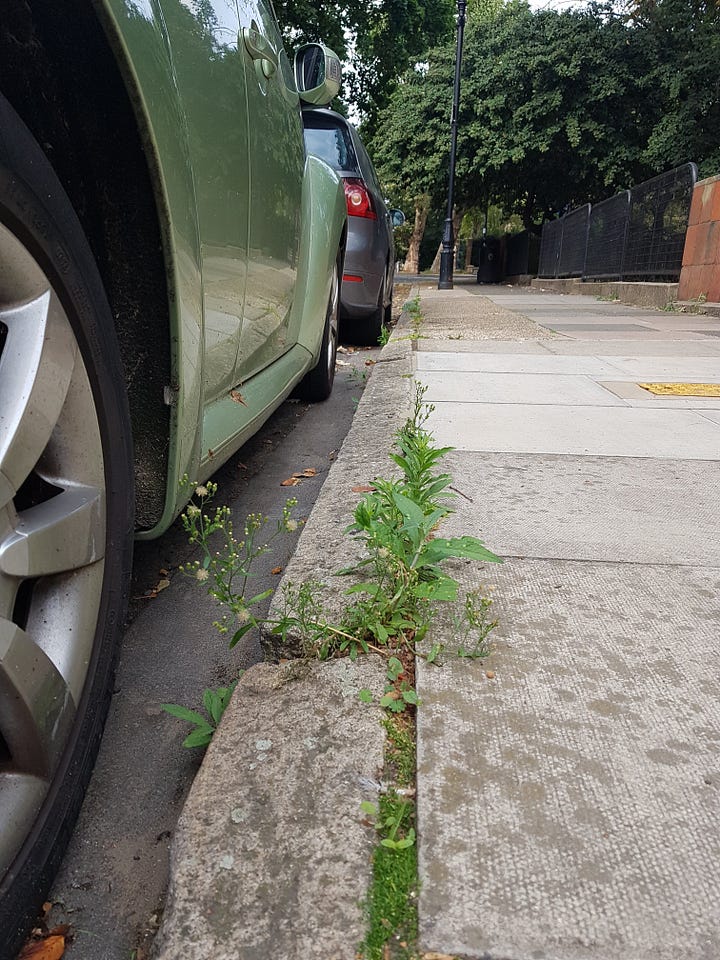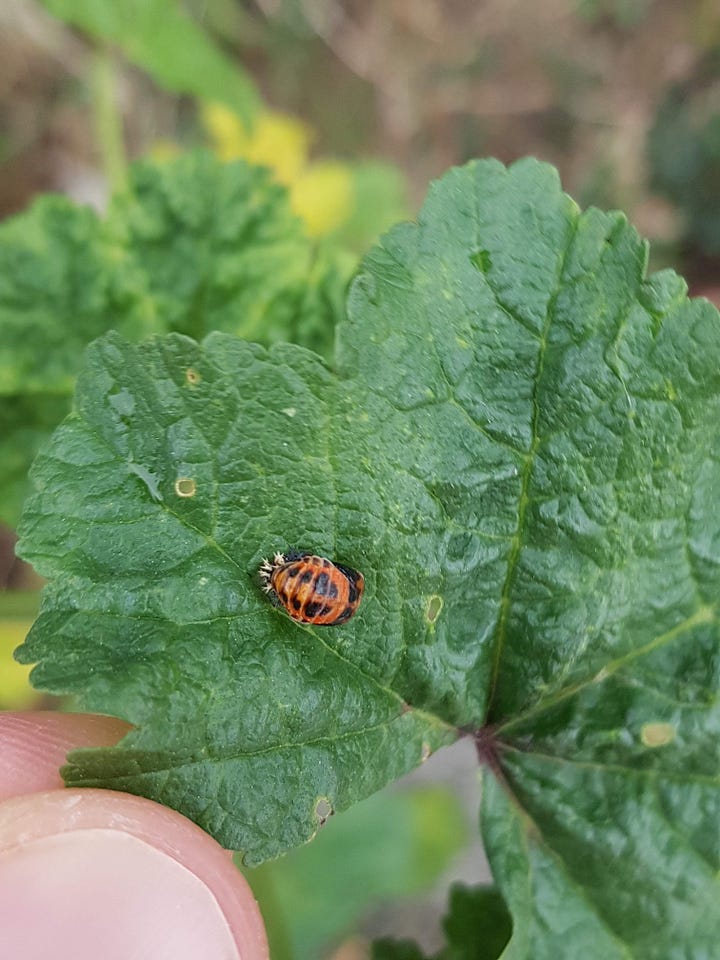

We all know a weed when we see one. Usually an ugly plant growing in exactly the place we don’t want it to, stealing nutrients and light from the ‘good’ plants we purposely planted. With weeding, mowing and spraying herbicide, it’s incredible how much time, energy and chemicals are used to keep certain plants from growing naturally. But have we got it wrong this whole time?
Many local authorities are now stepping back on their management of green spaces and spraying of herbicide on pavements. Locally to me in east London, this has led to a boom in so-called ‘weeds’, sprouting from cracks in paving, in tree pits and the unmown edges of parks. Let’s have a look at what weeds exactly are and how we could better embrace these misunderstood plants. Note: all the photos in this article are taken by me in east London.


There are millions of different types of plants in the world, from nettles to giant Redwood trees. Just like animals, plant species have gone through the pressures of evolution over millions of years to be best adapted to their environment and niche. This is why there are many kinds of tree for example, with some adapted to riversides and others happier on rocky mountains; each has its own niche.
When discussing weeds it is usually more accurate to describe them as ‘pioneer species’. Pioneer species are plants that specialise in growing on recently disturbed bare soil. This is why they are so pervasive on agricultural fields that are tilled regularly and in your garden after you’ve carted in fresh soil for your veg patch. In cities, we create lots of opportunities for pioneer species. Brownfield sites, uncovered tree pits and newly landscaped areas are all perfect for them. We’re really asking for it!
The appearance of pioneer species after disturbance is the first stage of ecological succession. The pioneers aerate the soil with their roots and prevent soil erosion. Next come grasses, shrubs and brambles, which further improve the soil quality. Eventually, trees grow and the patch of disturbed ground may become a forest until the next disturbance (e.g. forest fire, landslide, deforestation, etc.), when the cycle will repeat. The whole process can take decades: far too slow for impatient humans who want instant gratification.
I’m not suggesting that every patch of bare ground in cities be left to eventually become a forest. But even when not preparing the ground for an eventual forest, pioneers provide immediate benefits to biodiversity. The photo below shows a tree pit that has been colonised with dozens of pioneer species, some of which are undeniably beautiful. I pass by this patch several times a week and have observed several large (and scary-looking) spiders, various bees and wasps, and ladybirds here. There is almost certainly more species of creepy crawlies hiding in the soil and under the vegetation. To make clear: this abundance comes free from nature. Nobody planted these or encouraged them in any way!

My hunch is that if we let pioneers loose on more of our urban landscape, we would see an increase in biodiversity of plants and insects, which in turn would help support birds and mammals further up the food chain. Maybe we can also learn to enjoy their rugged aesthetic and their uses in traditional medicines too - Common Mallow for instance (pictured above) has been used for millennia to treat colds, burns, coughs, tonsillitis, bronchitis, digestive problems, eczema, and cut wounds.
This conversation also opens up questions about exotic and invasive species. The pink flowers in the photo at the top of this newsletter are Cape jewels, native to South Africa. What are they doing sprouting out of a sidewalk in east London? Are they causing problems by being here or adding to the unique urban ecology of a globalised city? I’ll explore this topic in another newsletter…
What do you think? Comment below to start the conversation!
See you next week,
Ross




Local authorities are very much into this around here, and I think it's a great step forward, but I realise nature is too 'untidy' for a lot of humans. It's taken over 10 years for my own little woodland to establish itself and look like a forest, and for most of that time it looked messy. I love walking there now, it always surprises me. As for the plants and flowers growing wild in the hedgerows, I have been astonished to find they nearly all have medicinal and nutritional value. There are some amazing foragers in the cities, including London, on Instagram.